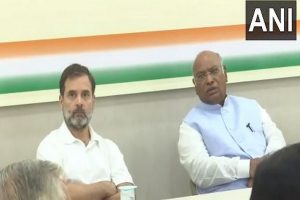To speed up the pace of pollution reduction in capital, a review meeting on the Real-time source apportionment project was held at the Delhi Secretariat under the chairmanship of Environment Minister Gopal Rai.
Experts and officials from the DPCC, IIT Kanpur, IIT Delhi, and TERI attended the meeting.
The first super site of the Real Time Source Apportionment System has been chosen at SKV, Pandara Road, stated the Delhi government.
In addition, the supersite and mobile lab for the Real Time Source Apportionment System will be launched in Delhi in August.
Divulging more details about the review meeting, Rai said, “A review meeting with the teams from DPCC, IIT Kanpur, IIT Delhi, and TERI about the Real-Time Source Apportionment study and pollution forecasting project was held today at the Delhi Secretariat.”
He said, “During the meeting, the IIT Kanpur team announced that a super site will be built at SKV, Pandara Road, to determine the true sources of pollution in Delhi. This supersite will take up 36 square metres of space. In addition, starting in August, real-time pollution factors will be assessed in Delhi, which will aid in the formulation of a strategy to control that source of pollution.”
The Environment Minister informed, “Through its apportionment system, Delhi will become the first city to identify the source of air pollution in real time. The project will aid in determining the causes of increased air pollution in any given location in Delhi.”
He added, “It will aid in the comprehension of pollution sources such as vehicles, dust, biomass burning, stubble burning, and industrial emissions. Based on these findings, the Delhi government will be able to take the necessary steps to reduce pollution from specific sources.”
This will aid in the identification and mitigation of various pollution-causing factors. Furthermore, pollution forecasting will assist the government in making important policy decisions such as construction and vehicular restrictions in advance, added Rai.












